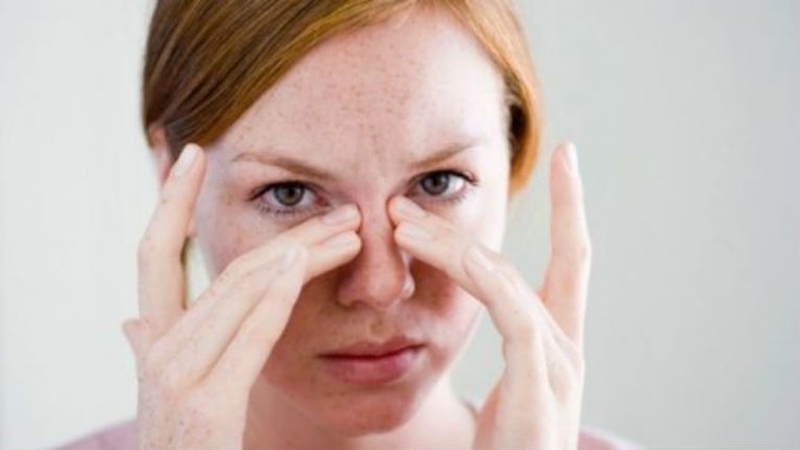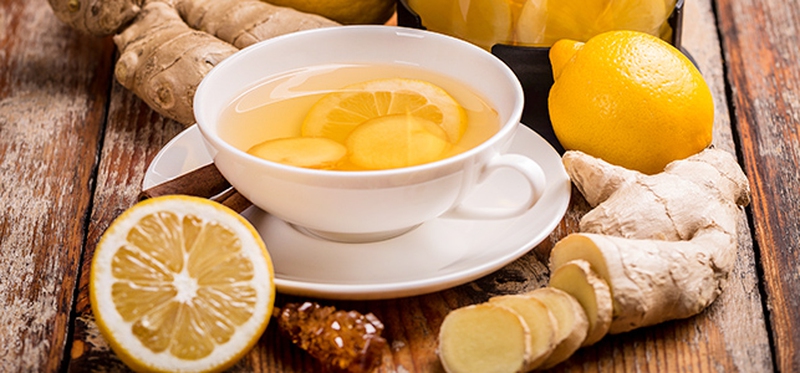When the nasal cavity is clogged, you may feel an unbearable sinus pressure and pain, which may even lead to a sinus headache. There are various factors that can cause this discomfort. If you have allergies, getting exposed to allergens will lead to a sinus pressure. Respiratory infections such as the flu or common colds can also block the nasal cavity. The problem is how to get rid of the discomfort.

How to Relieve Sinus Pressure Effectively
Step One: Know the Things You Can Do at Home
1. Keep your nasal passages moist. Breathing dry air can cause further irritation of your sinuses. Thus, it is recommended to breathe moist air when you are experiencing nasal congestion and sinus pressure. To do this, you can try the following:
· Use a humidifier
· Breathe moist air by taking a shower
· Inhale the steam from a warm pot of water
2. Keep yourself hydrated. Drinking lots of fluids helps in keeping your mucus thin and help unclog your nasal cavity. However, avoid drinking alcohol and coffee. These beverages can cause dehydration. Water and a warm cup of tea are the best choices for relieving sinus pressure.
3. Use nasal spray. Saline or salt water can help moisten your nasal passages. Nasal sprays containing saline solution can be bought in drug stores. Your doctor can also describe something based on your situation.
4. Irrigate your nose using a neti pot or bulb syringe. Nasal irrigation is usually done to help clear and cleanse your nasal cavity. A saline solution is needed for this. To irrigate your nose, tilt your head at a 45° angle. Position the neti pot’s spout in the opening of your nose and squeeze in the solution. Repeat the procedure in your other nostril.
5. Hot compress. Placing a warm washcloth over your face can help open your nasal passages and loosen the mucus in it. You can do this a couple of times a day to ease breathing and discomfort.
6. Keep your head elevated when sleeping. Sleeping can be difficult when your nasal cavity is clogged. By keeping your head elevated, you can make your breathing easier. It also leads to better mucus drainage.
7. Know your sinus pressure points. Sinus pressure points are found between your eyes, under your cheeks, at the sides of your nostrils, in the eyebrows, at the bridge of your nose, and the philtrum or under your nose. You can ease your sinus pressure and pain by gently pressing these pressure points with your fingers for a couple of minutes.
Step Two: Take Over-the-Counter Medications
1. Decongestants
How to relieve sinus pressure and pain? Nasal congestion is the most common cause of it. Decongestants not only make you breathe comfortably but also relieve sinus pressure.
Decongestants can be bought over-the-counter in various dosage forms. You can buy oral decongestants available in tablet or capsule. The generic names are phenylephrine and pseudoephedrine. You can also buy nasal sprays with generic names such as naphazoline, oxymetazoline, or phenylephrine.
Oral decongestants should not be taken for more than 7 days without your doctor’s approval. Nasal sprays should only be taken for 3 days. If you take these products longer, it can aggravate your congestion and sinus pressure. Decongestants and other kinds of medicines for colds should not be given to children under the age of 4 years.
2. Antihistamines
Sinus pressure and pain can also be caused by an allergic reaction. To get relief, your best move is to avoid contact with your allergens and take an antihistamine. The most common over-the-counter antihistamines are diphenhydramine and clemastine.
Keep in mind that antihistamines only relieve allergy symptoms such as sneezing, runny nose, and itchiness. Congestion may still be present. You can take medications containing decongestant and antihistamine. These types of drugs can cause drowsiness. Thus, it is best to avoid taking antihistamines or decongestants if you are going out, especially if you are going to drive. Nowadays, such drugs are available that are labeled “non-drowsy.” You can opt for these drugs if you are going outdoors or you have to stay awake.
3. Pain Relievers
Another viable option to relieve sinus pain and pressure is to take a pain reliever. This is very helpful if you’re also experiencing sinus headache. Analgesics such as acetaminophen can be taken. If analgesics are ineffective, you can opt for NSAIDs such as ibuprofen and naproxen.
Step One: Try Natural Remedies
How to relieve sinus pressure and pain? There are various natural products you can use to relieve sinus discomfort.
1. Essential Oils
Eucalyptus and peppermint oil can be used to relieve nasal congestion. These oils are known to help clear mucus, open your nasal passages and fight infection. You can add a few drops of oil in a warm pot of water and use it for steam inhalation. You can also disperse these oils in the air with the use of essential oil diffusers. If you have a food grade essential oil, you can also rub one drop at the top of your mouth and drink water afterward.
2. Spicy Foods
Eating spicy foods is a widely-used remedy for nasal and sinus congestion and common colds. Spicy foods such as chili, cayenne, and wasabi can help open nasal passages. In addition, capsaicin, the active ingredient in chili peppers, is known to relieve pain.
3. Ginger Tea
One popular natural remedy for relieving nasal congestion including sinus pressure is ginger tea. Drinking a warm cup of ginger tea can make you feel better due to various reasons. Being a warm beverage, it can help moisten your nasal passages. Ginger has an active ingredient known as gingerol. This compound has anti-inflammatory properties, which helps ease swollen sinuses. Gingerol can also help suppress mucus production.
4. Turmeric
How to relieve sinus pressure? Another natural product that has anti-inflammatory properties is turmeric. Curcumin, the active ingredient present in turmeric, is the primary reason that this product can help ease the swelling of your sinuses. For a more potent tea, you can combine turmeric and ginger.
If your sinus discomfort persists for more than 7 days, it is best to see your doctor. If you have green or yellow mucus, it is a sign of bacterial infection. In this case, you also need to see your doctor to get appropriate medications.


View All Comments /Add Comment